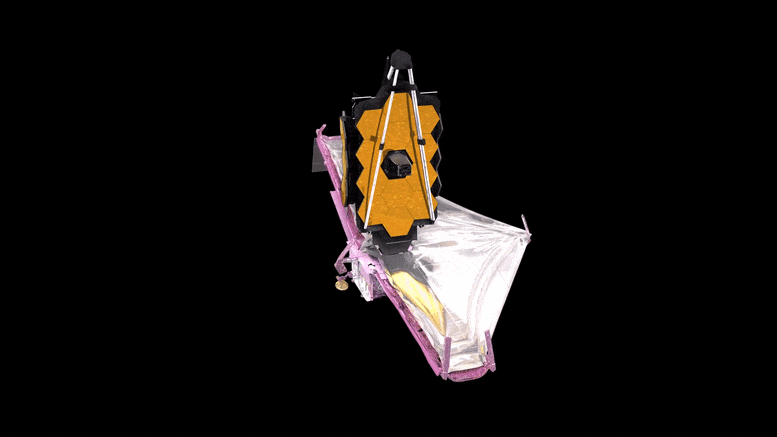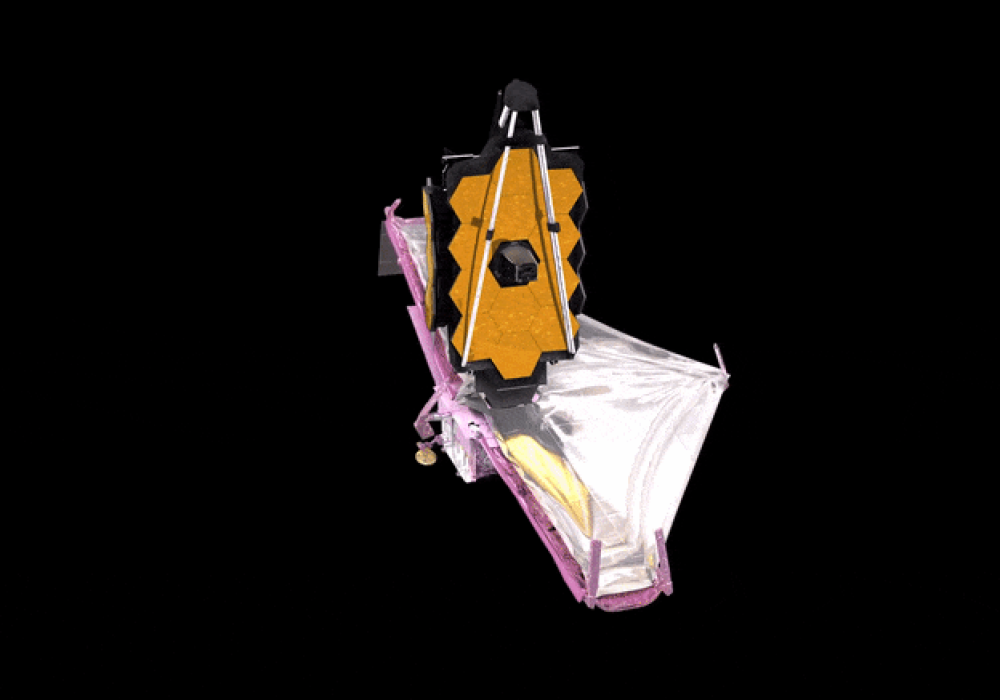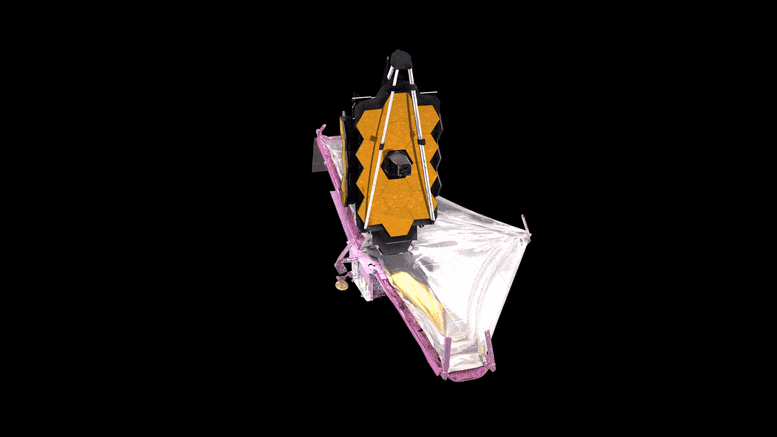
Webb sunshield deployment animation. Credit: NASA’s Goddard Space Flight Center Conceptual Image Lab
Early this afternoon the Webb mission operations team concluded the deployment of the first of two structures that hold within them Webb’s most unpredictable and in many ways complicated component: the sunshield.
The structures – called the Forward and Aft Unitized Pallet Structures – contain the five carefully folded sunshield membranes, plus the cables, pulleys, and release mechanisms that make up Webb’s sunshield. The team completed the deployment of the forward pallet at approximately 1:21 p.m. EST, after beginning the entire process about four hours earlier. The team will now move on to the aft pallet deployment.
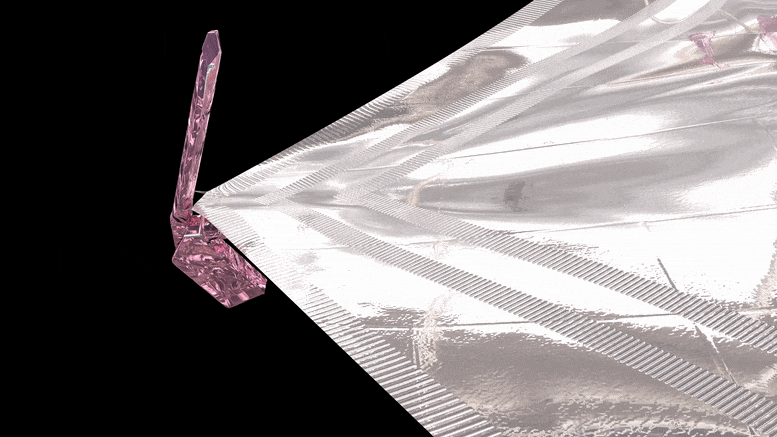
J- Boom and Sun Shield deployment. Credit: NASA’s Goddard Space Flight Center Conceptual Image Lab
The deployment of the forward pallet required several hours of the mission operations team carefully walking through dozens of steps – only one of which was the actual motor-driven deployment to move the pallet from its stowed position to its deployed state. The lowering of the forward pallet also marks the first time that structure has conducted that movement since it underwent its final unfolding and deployment test in December 2020 at Northrop Grumman Space Park in Redondo Beach, California.
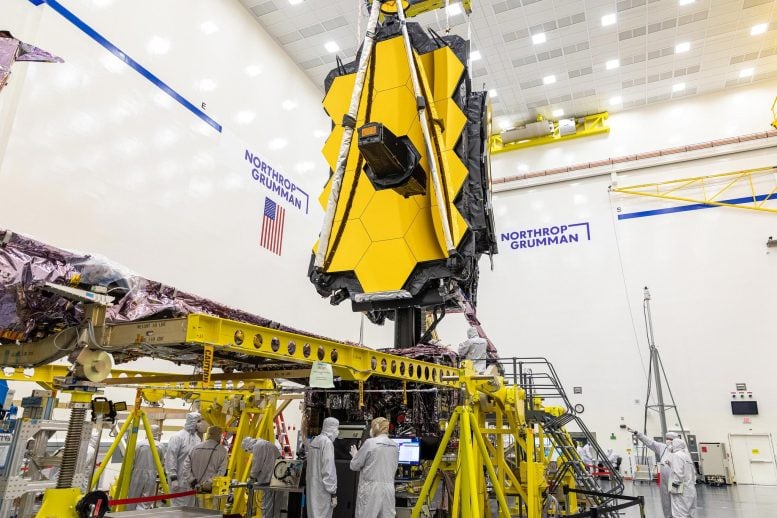
Engineers at Northrop Grumman Space Park in Redondo Beach, California, oversee Webb’s final mirror fold test in April 2021. The forward pallet structure is seen here in the foreground, in its unfolded state. Credit: Northrop Grumman
The deployment of the pallet structures begins what will be at least five more days of necessary steps to deploy the sunshield – a process that will ultimately determine the mission’s ability to succeed. If the sunshield isn’t in place to keep Webb’s telescope and instruments extremely cold, Webb would be unable to observe the universe in the way it was designed.
The steps involved – outlined here – will continue after today with the extension of the Deployable Tower Assembly, followed by the release of the sunshield covers, the extension of the mid-booms, and finally the tensioning of the five Kapton layers of the sunshield itself.
As the deployment of the sunshield will be one of the most challenging spacecraft deployments NASA has ever attempted, the mission operations team built flexibility into the planned timeline, so that the schedule and even sequence of the next steps could change in the coming days.

